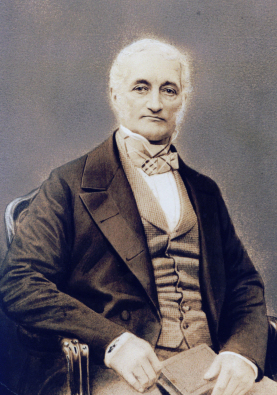
William Burn was a Scottish architect. He received major commissions from the age of 20 until his death at 81. He built in many styles and was a pioneer of the Scottish Baronial Revival, often referred to as the golden age of Scottish architecture.
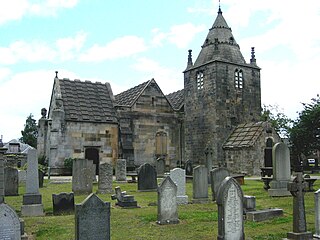
Corstorphine is an area of the Scottish capital city of Edinburgh. Formerly a separate village and parish to the west of Edinburgh, it is now a suburb of the city, having been formally incorporated into it in 1920.
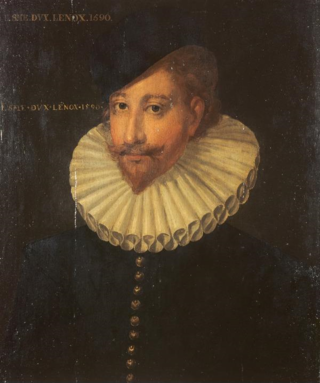
Esmé Stewart, 1st Duke of Lennox, 1st Earl of Lennox, 6th Seigneur d'Aubigny of the Château d'Aubigny at Aubigny-sur-Nère in the ancient province of Berry, France, was a Catholic French nobleman of Scottish ancestry who on his move to Scotland at the age of 37 became a favourite of the 13-year-old King James VI of Scotland. Esmé Stewart was the first cousin of James' father, Henry Stewart, Lord Darnley. Despite his conversion to Calvinism he was never trusted by the Scots and returned to France where he ended his days. Sir James Melville described him as "of nature upright, just and gentle". He was the first to popularise the firstname Esmé in the British Isles.

The Canongate is a street and associated district in central Edinburgh, the capital city of Scotland. The street forms the main eastern length of the Royal Mile while the district is the main eastern section of Edinburgh's Old Town.
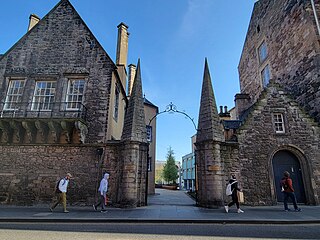
The Moray House School of Education and Sport is a school within the College of Arts, Humanities and Social Science at the University of Edinburgh. It is based in historic buildings on the Holyrood Campus, located between the Canongate and Holyrood Road.
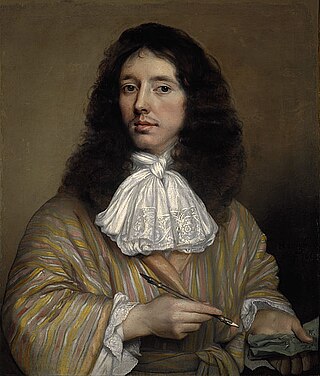
Sir William Bruce of Kinross, 1st Baronet, was a Scottish gentleman-architect, "the effective founder of classical architecture in Scotland," as Howard Colvin observes. As a key figure in introducing the Palladian style into Scotland, he has been compared to the pioneering English architects Inigo Jones and Christopher Wren, and to the contemporaneous introducers of French style in English domestic architecture, Hugh May and Sir Roger Pratt.

James Smith was a Scottish architect, who pioneered the Palladian style in Scotland. He was described by Colen Campbell, in his Vitruvius Britannicus (1715–1725), as "the most experienced architect of that kingdom".

William Wallace was a Scottish master mason and architect. He served as King's Master Mason under James VI.

John Mylne, sometimes known as "John Mylne junior", or "the Younger", was a Scottish master mason and architect who served as Master Mason to the Crown of Scotland. Born in Perth, he was the son of John Mylne, also a master mason, and Isobel Wilson.
Ian Gordon Lindsay was a Scottish architect. He was most noted for his numerous restoration projects, sometimes of whole villages but curiously was also involved in the design of several hydro-electric power stations.

John Kinross was a Scottish architect. He was particularly skilled in traditional styles and was highly involved in the restoration of historic buildings, researching his subjects well before any project.
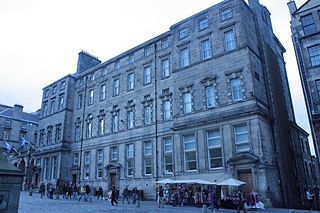
Ebenezer James MacRae was a Scottish architect serving as City Architect for Edinburgh for most of his active life.

Architecture in early modern Scotland encompasses all building within the borders of the kingdom of Scotland, from the early sixteenth century to the mid-eighteenth century. The time period roughly corresponds to the early modern era in Europe, beginning with the Renaissance and Reformation and ending with the start of the Enlightenment and Industrialisation.

John Chesser (1819-1892) was a nineteenth-century Scottish architect largely based in Edinburgh. He was described as "the prime exponent of terrace design at the time". A very high number of his works are now category A listed buildings, evidencing the quality of his work, particularly in the West End of Edinburgh.

Robert Philip Andrew Hurd was an influential conservation architect. His original aim was to be an architectural author specialising in traditional forms. He came to Scotland in 1930 and worked at the Edinburgh College of Art for two years as assistant to the architect and planner Frank Mears. He was an early and highly respected conservation architect and wrote and broadcast on Scottish architecture, planning and reconstruction.

Robert Wilson was architect for the Edinburgh Board of Education and responsible for a high percentage of the city's schools. He is also noteworthy for involvement in several institutions aimed at improving the life of the poor and destitute in the city.
Peter MacGregor Chalmers LLD was a Scottish architect specialising in country churches, and also being involved in several important restoration schemes.

Harold Ogle Tarbolton FRIBA (1869–1947) was a 19th/20th century British architect, mainly working in Scotland. He was affectionately known as Tarrybreeks. In later life he went into partnership with Sir Matthew Ochterlony to create Tarbolton & Ochterlony.
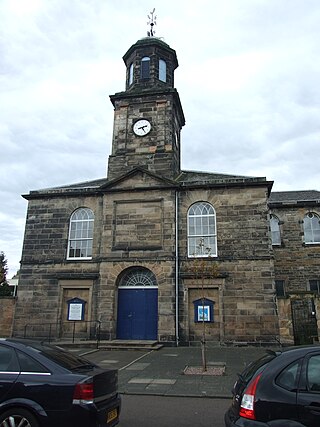
William Sibbald (c.1760–1809) was a Scottish architect. He was superintendent of public works in Edinburgh and assisted Robert Reid in setting out and designing the Second New Town.
Alexander Esmé Gordon was a Scottish Modernist architect, writer, and painter who served as Secretary of the Royal Scottish Academy between 1973 and 1978.

















